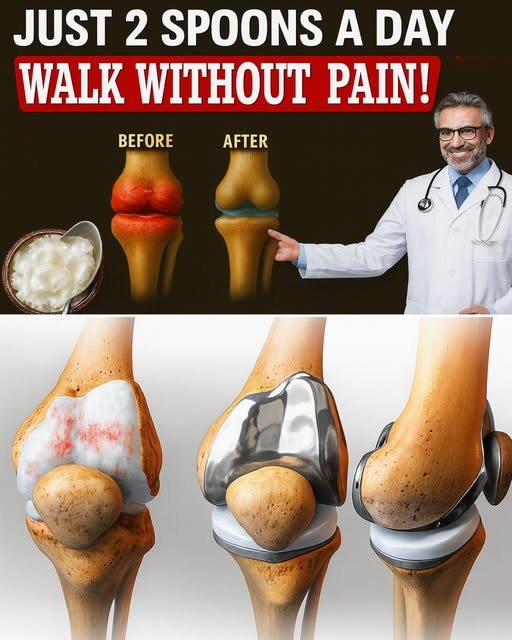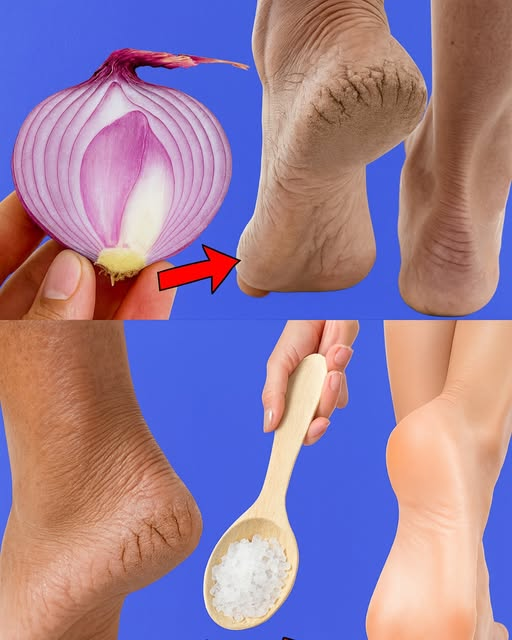Did you know a simple bedtime snack could help preserve your strength as you age? According to the National Institute on Aging, adults lose up to 8% of muscle mass per decade after age 30, accelerating after 60. This can impact mobility and independence, but a surprising ally—cottage cheese—might change that. At ActiveAging Fanpage, where we share daily tips for vibrant senior living, we’re excited to reveal how cottage cheese, rich in slow-digesting casein protein, supports muscle repair while you sleep. This guide offers eight practical ways to use cottage cheese, backed by science, to combat age-related muscle loss, or sarcopenia. With easy recipes, real-life stories, and expert advice, you’ll learn how to integrate this nutrient-packed food into your routine. Visit activeaging.com for more strategies and join our fanpage community to stay strong and active. Let’s explore how a humble snack can transform your health!

Understanding Muscle Loss and Sarcopenia
Sarcopenia, the age-related loss of muscle mass and strength, affects nearly 30% of adults over 60, per a 2023 Journal of Gerontology study. It stems from several factors: reduced physical activity, declining hormone levels (like testosterone and growth hormone), lower protein intake, and slower muscle protein synthesis. These changes can lead to weakness, fatigue, and increased fall risk, impacting quality of life.
Muscle protein synthesis is the body’s process of rebuilding muscle tissue, which slows with age. During sleep, your body repairs and regenerates, but without adequate protein, it lacks the building blocks needed. Nutrition, especially protein-rich foods, plays a critical role in countering sarcopenia. Combining smart dietary choices with exercise can significantly slow muscle decline, helping seniors stay active and independent.

Why Cottage Cheese Is a Muscle-Saving Superfood
Cottage cheese stands out as a powerhouse for muscle health, especially for seniors. Its key strength lies in casein protein, which digests slowly, providing a steady stream of amino acids overnight. A single cup delivers about 25 grams of protein, meeting a significant portion of the 20-30 grams per meal recommended for older adults by the American Journal of Clinical Nutrition (2022).
Beyond protein, cottage cheese offers calcium for bone health, vitamin B12 for energy, and phosphorus for tissue repair. Its low sugar content (in plain varieties) makes it a smart bedtime choice compared to sugary snacks. A 2021 British Journal of Nutrition study found that pre-sleep casein consumption boosted muscle protein synthesis by 20% in older adults, supporting muscle maintenance.
Choose plain, full-fat or low-fat cottage cheese without added sugars. Organic or grass-fed options may offer higher nutrient quality. Always check labels for additives if you have dietary sensitivities.

8 Ways to Use Cottage Cheese to Prevent Muscle Loss
These eight methods provide practical, science-backed ways to incorporate cottage cheese into your nighttime routine to support muscle health. Each includes recipes or tips for easy integration.
1. Classic Cottage Cheese Bedtime Snack
Eat ½ to 1 cup of plain cottage cheese 30-60 minutes before bed. Its casein protein fuels overnight muscle repair. A 2022 Nutrients study showed pre-sleep protein improved muscle recovery in seniors.
Tip: Add a pinch of sea salt for flavor. Eat 4-5 nights weekly.
2. Berry-Cottage Cheese Bowl for Antioxidants
Top ½ cup cottage cheese with ¼ cup fresh berries (blueberries or strawberries) for antioxidant support. Berries combat oxidative stress, which accelerates muscle loss, per a 2023 Journal of Aging Research study.
Recipe:
- ½ cup cottage cheese
- ¼ cup mixed berries
- Optional: 1 tsp honey
Enjoy nightly.
3. Cottage Cheese and Nut Mix for Healthy Fats
Mix ½ cup cottage cheese with 1 tbsp chopped walnuts or almonds. Nuts add omega-3s and magnesium, supporting muscle function. A 2021 Clinical Nutrition study linked nut consumption to stronger grip strength in seniors.
Tip: Use unsalted nuts to control sodium intake.

4. Cinnamon-Spiced Cottage Cheese for Blood Sugar Control
Sprinkle ½ tsp cinnamon on ½ cup cottage cheese. Cinnamon may stabilize blood sugar, preventing muscle breakdown, per a 2020 Diabetes Care study. This combo is tasty and functional.
Recipe:
- ½ cup cottage cheese
- ½ tsp cinnamon
- Optional: 1 tsp chia seeds
Eat 3-4 times weekly.
5. Cottage Cheese Smoothie for Easy Digestion
Blend ½ cup cottage cheese with ½ banana, 1 cup almond milk, and a dash of vanilla. This creamy drink is gentle on the stomach and protein-rich. A 2022 Journal of Nutrition study noted smoothies aid protein absorption in older adults.
Recipe:
- ½ cup cottage cheese
- ½ banana
- 1 cup almond milk
- ¼ tsp vanilla extract
Drink 2-3 nights weekly.
6. Savory Cottage Cheese with Avocado
Combine ½ cup cottage cheese with ¼ mashed avocado for a savory twist. Avocado’s healthy fats enhance nutrient absorption, supporting muscle repair, per a 2023 Nutrients study.
Tip: Add a sprinkle of black pepper for flavor. Use 2-3 times weekly.

7. Cottage Cheese and Flaxseed for Fiber
Mix ½ cup cottage cheese with 1 tbsp ground flaxseed. Flaxseed adds fiber and omega-3s, aiding muscle recovery and digestion, per a 2021 Journal of Functional Foods study.
Recipe:
- ½ cup cottage cheese
- 1 tbsp ground flaxseed
- Optional: ¼ cup diced pineapple
Enjoy 3 times weekly.
8. Cottage Cheese Parfait with Granola
Layer ½ cup cottage cheese with 2 tbsp low-sugar granola and ¼ cup sliced peaches. This parfait adds crunch and micronutrients, supporting overall health. A 2020 Geriatrics study linked balanced snacks to better muscle maintenance.
Tip: Choose granola with minimal added sugar.
Supporting Muscle Health Beyond Cottage Cheese
Cottage cheese is a great start, but combining it with other habits maximizes results. Here’s how to build a muscle-preserving lifestyle:
- Strength Training: Engage in resistance exercises (e.g., bodyweight squats, light weights) 2-3 times weekly. A 2023 Journal of Strength and Conditioning Research study showed strength training increased muscle mass by 5% in seniors.
- Spread Protein Intake: Aim for 20-30 grams of protein per meal, including breakfast and lunch, to support daily muscle synthesis.
- Stay Active: Walk, garden, or do yoga daily to improve circulation and muscle function.
- Hydrate: Drink 8-10 cups of water daily to support metabolism and recovery.
- Sleep Well: Aim for 7-8 hours of quality sleep to optimize muscle repair.
Choosing and Using Cottage Cheese Safely
Select plain, high-quality cottage cheese from trusted brands. Organic or grass-fed options may offer better nutrient profiles. Store in the fridge at 35-40°F and consume within a week of opening. Check for spoilage (odor or texture changes) before eating.
Safety Tips:
- Start with ½ cup if new to cottage cheese to assess digestion.
- Avoid if allergic to dairy or lactose intolerant, unless using lactose-free varieties.
- Consult a doctor if on a low-sodium diet, as some brands are high in sodium.
- Pair with fiber-rich toppings to prevent digestive discomfort.
Real-Life Success Stories
Mary, a 67-year-old retiree, added a nightly cottage cheese and berry bowl to her routine. After a month, she noticed stronger legs during walks, sharing her story on ActiveAging Fanpage. Tom, a 72-year-old golfer, used the smoothie recipe and reported less muscle fatigue, improving his swing. These experiences show cottage cheese’s impact when paired with consistency.
Experts suggest tracking strength gains or energy levels in a journal. Join our fanpage community to share your progress and learn from others.
Integrating Cottage Cheese into a Balanced Lifestyle
Cottage cheese shines when paired with a holistic approach. Combine it with a diet rich in vegetables, lean proteins, and whole grains. Incorporate anti-inflammatory foods like turmeric or berries to enhance muscle health. Regular check-ins with a doctor or nutritionist ensure your plan aligns with your needs.
For persistent muscle weakness, consult a healthcare provider to rule out underlying conditions. A dietitian on activeaging.com recommends pairing cottage cheese with vitamin D-rich foods (like salmon) to boost muscle and bone health.
In wrapping up, cottage cheese is a simple, science-backed way to combat muscle loss overnight. These eight methods—from bowls to smoothies—offer practical ways to support strength and vitality. Visit activeaging.com or follow ActiveAging Fanpage for more tips and community support. Start tonight and take a step toward stronger, healthier aging.
Frequently Asked Questions
How much cottage cheese should I eat before bed?
Half a cup to one cup provides 12-25 grams of protein, ideal for overnight muscle repair. Adjust based on your dietary needs.
Can cottage cheese help with muscle loss if I don’t exercise?
It supports muscle repair, but combining it with strength training yields better results. Even light activity like walking helps.
Is cottage cheese safe for lactose-intolerant people?
Lactose-free cottage cheese is available. Consult a doctor if you have severe dairy sensitivities.
How soon will I notice muscle improvements?
With consistent use and exercise, improvements in strength or energy may appear in 2-4 weeks. Results vary.
Can I eat cottage cheese if I’m on a low-sodium diet?
Check labels, as some brands are high in sodium. Opt for low-sodium varieties and consult your doctor.
Disclaimer: This article is for informational purposes only and not a substitute for professional medical advice. Consult your healthcare provider before making dietary changes, especially if you have underlying conditions or are on medication. Results vary by individual.




